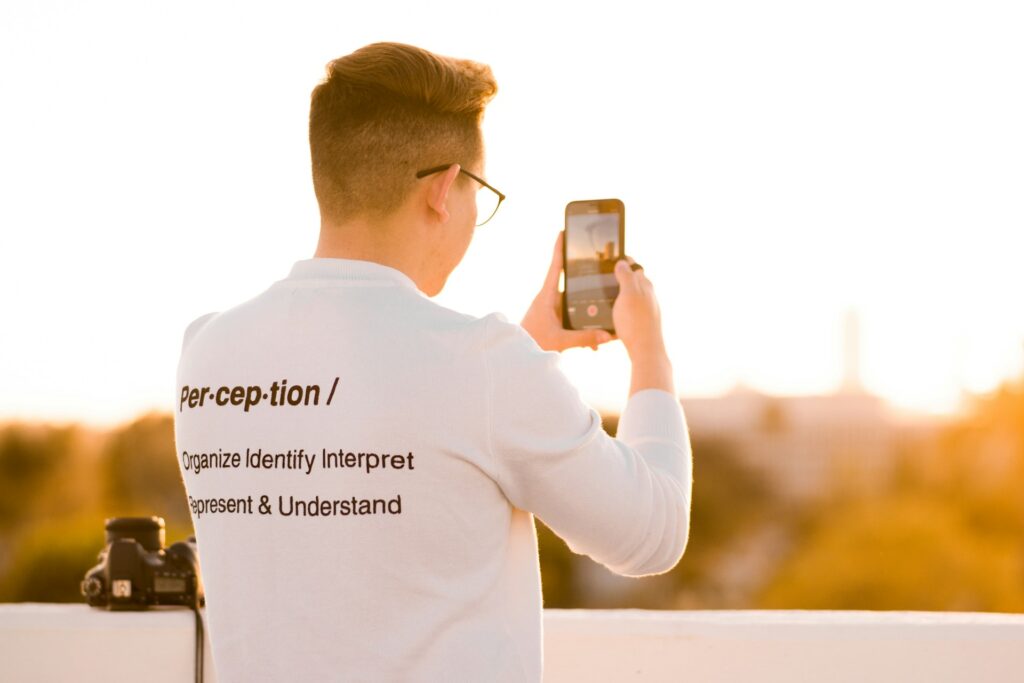
In the world of content creation, every word, image, and video you craft carries the potential to shape your audience’s perception of your brand. It’s a world where compelling narratives can transform casual observers into dedicated followers. This is the power of brand storytelling.
Brand storytelling isn’t merely about describing your products or services. It’s about crafting a narrative that encapsulates your brand’s identity, its mission, and its values. It’s about telling a story that resonates with your audience on an emotional level, making them feel a part of your brand’s journey.
Why is this so crucial for content creators?
Because in an age where consumers are bombarded with endless streams of content, those who can tell captivating stories stand out from the crowd. They’re the ones who can foster deeper connections, inspire loyalty, and ultimately drive engagement and conversions.
In this guide, we will explore the fundamentals of brand storytelling, explore the role of emotion, and provide actionable techniques for weaving your brand’s unique narrative into your content. We’ll also highlight common mistakes to avoid in brand storytelling.
Understanding the Basics of Brand Storytelling
Let’s start with the concept of a brand narrative.
A brand narrative is essentially your brand’s story. It’s not just about what you sell or the services you offer. Instead, it encompasses your brand’s mission, values, and identity. It’s about who you are, what you stand for, and why you do what you do.
This narrative plays a crucial role in connecting with your audience. Why?
Because people love stories. Stories engage us, evoke emotions, and make ideas more relatable.
When you tell your brand’s story, you’re not just sharing facts about your business. You’re creating an emotional connection with your audience. You’re helping them understand your brand on a deeper level and giving them reasons to care about your brand.
Storytelling Elements
Now, let’s talk about the four main elements of storytelling and how they relate to branding.
- Characters: In the context of brand storytelling, your brand itself is the primary character. But other characters can include your employees, your customers, or even your competitors. These characters give your story a human element, making it more relatable to your audience.
- Setting: This is the backdrop against which your brand’s story unfolds. It could be your physical location, your industry, or the broader societal context in which your brand operates. The setting provides context for your story and helps shape your brand’s identity.
- Conflict: Every good story has a conflict or a challenge that needs to be overcome. For brands, this could be a problem your customers face that your product or service solves, or a challenge your brand had to overcome to get where it is today.
- Resolution: This is how the conflict gets resolved. In brand storytelling, the resolution often involves demonstrating how your brand solves a problem or fulfills a need for your customers.
By incorporating these elements into your brand storytelling, you can create a compelling narrative that not only engages your audience but also helps reinforce your brand’s identity and values.
It’s about creating a story that resonates with your audience, making them feel a part of your brand’s journey. This is the essence of effective brand storytelling.
The Role of Emotion in Brand Storytelling

Emotion plays a central role in brand storytelling. It’s the emotional connection that turns ordinary customers into loyal fans. That’s because emotions influence our actions. They are at the heart of why we make certain decisions, including purchasing decisions.
When a brand story tugs at our emotions, it becomes more memorable, more impactful. It’s no longer just about what a brand sells, but about how a brand makes us feel. By evoking emotions, brands can foster deeper connections with their audience, influence their perceptions, and inspire them to take action.
Let’s consider a few hypothetical examples to illustrate this point:
A Coffee Shop Brand
Imagine a coffee shop that prides itself on sourcing its beans from small-scale farmers around the world. Their brand story could focus on the hardworking farmers who grow their coffee. They could share stories of these farmers’ dedication and passion for their craft, thereby creating an emotional connection with their audience. Customers aren’t just buying coffee; they’re supporting a livelihood, a dream.
A Tech Startup
Consider a tech startup that has developed an innovative app to help reduce food waste. Their brand story could center on the global issue of food waste and its impact on our planet. By sharing stories of how their app is making a difference, they can evoke emotions of hope and empowerment among their audience. Users aren’t just downloading an app; they’re contributing to a greener planet.
A Luxury Fashion Brand
A luxury fashion brand could tell a story about the meticulous craftsmanship that goes into each of their products. By revealing the hours of work and the attention to detail involved, they can stir feelings of admiration and respect for their craft. Customers aren’t simply purchasing a product; they’re acquiring a piece of art.
In each of these examples, the brands are not just selling a product or service. They are telling a story that evokes emotion, which in turn fosters a deeper connection with their audience.
How To Identify Your Brand’s Story

Authenticity is paramount in brand storytelling.
Authentic stories resonate more deeply with audiences because they are genuine and relatable. An authentic brand story reflects your brand’s true identity, values, and experiences. It’s not a marketing gimmick – it’s a truthful representation of who you are as a brand.
Finding and defining your brand’s unique story can seem challenging, but here are some tips to guide you:
- Reflect on your brand’s origins: Every brand has a beginning. What inspired the creation of your brand? What obstacles did you overcome? These early experiences can form the foundation of your brand’s story.
- Understand your brand’s mission and values: What does your brand stand for? What makes it unique? Your mission and values are integral parts of your brand’s story. They define what your brand is about and what it strives to achieve.
- Know your audience: Who are you trying to reach with your brand story? Understanding your audience can help you shape your story in a way that resonates with them.
- Identify key moments: Has there been a pivotal moment or event that significantly impacted your brand? Such moments can add drama and interest to your brand’s story.
- Consider your brand’s personality: If your brand were a person, what kind of person would it be? Identifying your brand’s personality can help you convey your story in a way that’s consistent with your brand’s identity.
Remember, your brand’s story isn’t just about what you do. It’s about who you are, why you exist, and what sets you apart. By finding and defining this story, you can create a stronger emotional connection with your audience, differentiate your brand from competitors, and build a loyal customer base.
Techniques for Incorporating Brand Storytelling Into Your Content

Incorporating your brand’s story into your content is an art. It requires creativity and a deep understanding of your brand and audience. But when done right, it can make your content more engaging, relatable, and impactful.
Here are some practical tips and techniques for weaving your brand story into various types of content:
Blogs
Blogs provide a fantastic platform for telling your brand’s story. You can use them to share the history of your brand, highlight key moments, and discuss your mission and values. Try to weave your brand’s narrative into your blog posts in a natural, authentic way. For instance, you can share stories about how your products or services were developed, or about the people behind your brand.
Social Media Posts
Social media platforms allow you to tell your brand’s story in bite-sized, digestible chunks. Use these platforms to share snippets of your brand’s story, like behind-the-scenes glimpses, customer testimonials, or milestone celebrations. Remember to keep your tone consistent with your brand’s personality and to engage with your followers by responding to comments and messages.
Videos
Videos are a powerful storytelling medium because they can convey emotion and authenticity in a way that text cannot. Consider creating videos that showcase your brand’s story, such as interviews with the founder, tours of your facilities, or stories about the people who use your products or services. Keep your videos short and engaging, and aim to evoke emotion in your viewers.
Email Newsletters
Email newsletters offer another opportunity to incorporate your brand’s story. You can use them to share updates, highlight success stories, or discuss challenges your brand has overcome. Make sure your newsletters are informative and engaging, and always tie them back to your brand’s narrative.
Remember, the key to successful brand storytelling is authenticity.
So, whether you’re writing a blog post, crafting a social media update, filming a video, or sending an email newsletter, always stay true to your brand’s identity and values. Doing so will not only make your content more engaging, but it will also help build trust and loyalty among your audience.
6 Common Mistakes To Avoid in Brand Storytelling

Brand storytelling, when done correctly, can be a powerful tool for connecting with your audience and differentiating your brand. However, it’s not without its pitfalls.
Here are some common mistakes to avoid and how to sidestep them:
- Lack of Authenticity: Authenticity is crucial in brand storytelling. Consumers can easily spot a fabricated or exaggerated story. Always ensure your brand story is genuine and aligns with your brand values and identity.
- Ignoring the Audience: Remember, your brand story isn’t just about you; it’s also about your audience. Failing to consider your audience’s interests, needs, and values can result in a story that falls flat. Make sure your story resonates with your target audience.
- Overcomplicating the Story: Simplicity is key in storytelling. If your brand story is too complex or confusing, you risk losing your audience’s interest. Keep your story clear, concise, and compelling.
- Neglecting Emotion: As discussed earlier, emotion plays a vital role in brand storytelling. Neglecting to evoke emotions can make your story forgettable. Aim to stir feelings that align with your brand’s message.
- Inconsistency: Consistency in your brand story strengthens your brand identity and builds trust. Inconsistent messaging can confuse your audience and weaken your brand image. Ensure your story remains consistent across all platforms and communications.
- Not Evolving Your Story: While consistency is important, so is evolution. Brands grow and change, and your story should reflect this. Don’t be afraid to update your story as your brand evolves.
Harnessing the Power of Brand Storytelling
As we’ve explored in this post, brand storytelling is much more than a marketing buzzword. It’s a powerful tool that can profoundly influence how your audience perceives your brand, engages with your content, and ultimately, interacts with your products or services.
Through brand storytelling, you have the opportunity to move beyond the surface level and connect with your audience on a deeper, more emotional level. It’s about presenting your brand’s mission, values, and identity in a way that resonates with your audience, making them feel a part of your brand’s journey.
Remember, brand storytelling isn’t about creating a fictional narrative for your brand. Instead, it’s about authentically sharing who you are, what you stand for, and why you do what you do. It’s about creating content that not only informs, but also inspires and connects.
So, start today by crafting narratives that make your brand unforgettable. Because in the world of content creation, those who can tell captivating stories are the ones who stand out from the crowd.
Elevate Your Business with Expert Insights: Our content creation services are your key to unlocking the full potential of your real estate and business strategies. Connect with us now to learn how targeted, high-quality content can drive your success forward.


